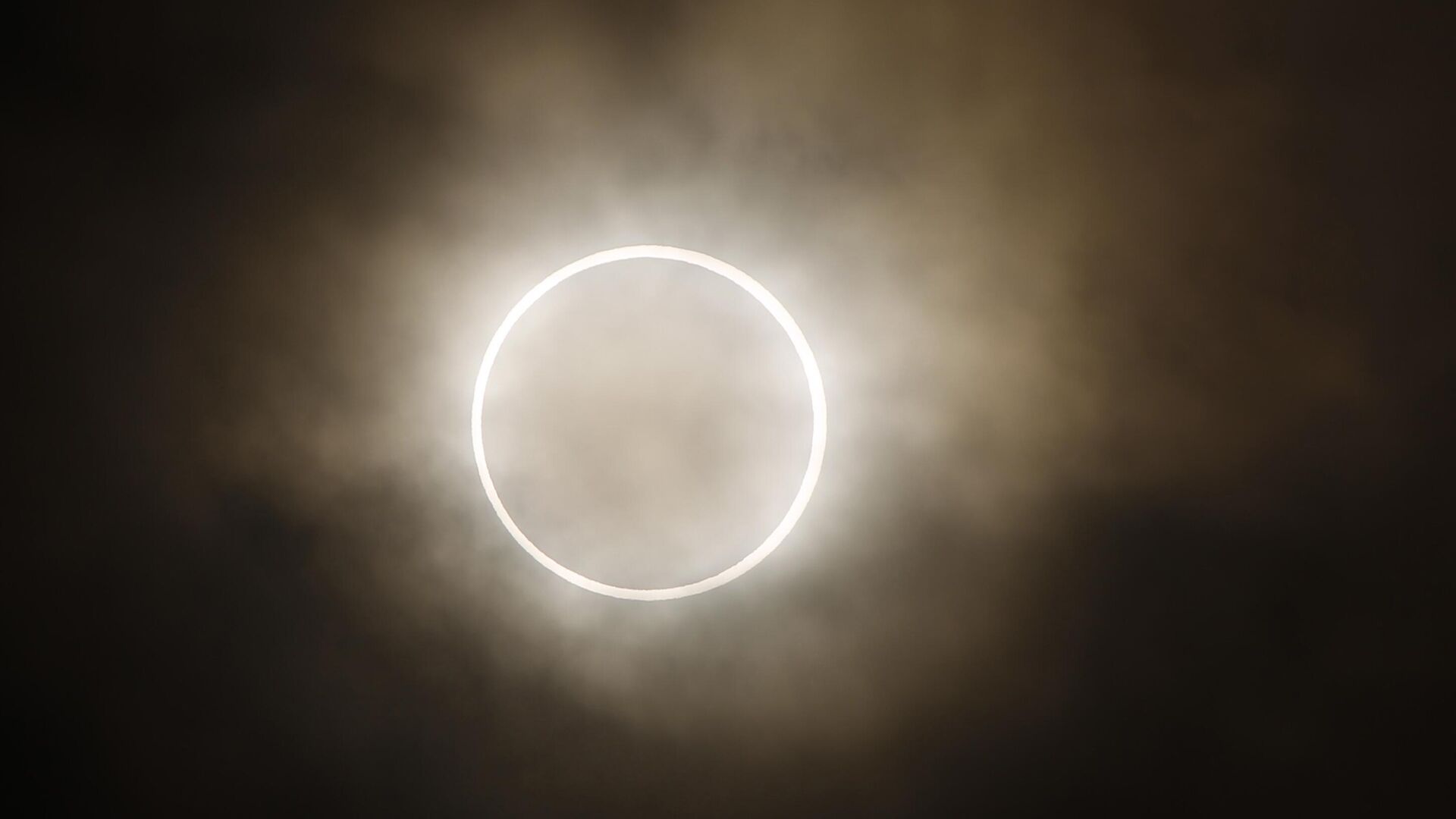https://sputnikglobe.com/20231010/this-saturday-rare-ring-of-fire-eclipse-may-be-coming-to-a-us-city-near-you-1114053882.html
This Saturday, Rare ‘Ring of Fire’ Eclipse May Be Coming to a US City Near You
This Saturday, Rare ‘Ring of Fire’ Eclipse May Be Coming to a US City Near You
Sputnik International
This Saturday morning, people along a narrow band of territory stretching from Oregon to Texas will be able to witness a rare phenomenon known as a “ring of fire” solar eclipse.
2023-10-10T02:39+0000
2023-10-10T02:39+0000
2023-10-10T02:40+0000
beyond politics
solar eclipse
solar eclipse
nasa
space
science & tech
america
https://cdn1.img.sputnikglobe.com/img/07e7/0a/0a/1114053724_0:207:2905:1841_1920x0_80_0_0_f9f46e8263ac5672bff0d3fa48cca8f2.jpg
This Saturday morning, people along a narrow band of territory stretching from Oregon to Texas will be able to witness a rare phenomenon known as a “ring of fire” solar eclipse.The event is unique in that part of the sun will still be visible, according to a press release from NASA. As with a typical solar eclipse, viewers will see the moon briefly pass in front of the sun. But since the moon will be near its most distant point from Earth, it will appear smaller, with a shimmering circle of sunlight behind it.It will be the first time an “annular” solar eclipse, as it's known, will be visible in the United States since 2012.The next one isn’t scheduled to be viewable from the US until 2039, although Americans will be able to see a total solar eclipse in April next year.NASA stresses the importance of viewing the event through special glasses or via an indirect method to protect one’s eyes from the light of the partially-visible sun. The space agency offers a resource on their website offering information about safe viewing methods.The annular eclipse will also be observable in parts of Central and South America, with the viewing path passing through Guatemala, Belize, Honduras, Nicaragua, Costa Rica, Panama, Colombia and Brazil. People living in or traveling through Mexico will be able to see it from atop a Mayan temple at the Edzná archaeological site on the Yucatán Peninsula.
Sputnik International
feedback@sputniknews.com
+74956456601
MIA „Rosiya Segodnya“
2023
Sputnik International
feedback@sputniknews.com
+74956456601
MIA „Rosiya Segodnya“
News
en_EN
Sputnik International
feedback@sputniknews.com
+74956456601
MIA „Rosiya Segodnya“
Sputnik International
feedback@sputniknews.com
+74956456601
MIA „Rosiya Segodnya“
solar eclipse, nasa, ring of fire eclipse, space, science, americas
solar eclipse, nasa, ring of fire eclipse, space, science, americas
This Saturday, Rare ‘Ring of Fire’ Eclipse May Be Coming to a US City Near You
02:39 GMT 10.10.2023 (Updated: 02:40 GMT 10.10.2023) Albuquerque, New Mexico and San Antonio, Texas are among the cities in the viewing path of a rare type of solar eclipse this weekend, according to NASA.
This Saturday morning, people along a narrow band of territory stretching from Oregon to Texas will be able to witness a rare phenomenon known as a “ring of fire” solar eclipse.
The event is unique in that part of the sun will still be visible, according to a
press release from NASA. As with a typical solar eclipse, viewers will see the moon briefly pass in front of the sun. But since the moon will be near its most distant point from Earth, it will appear smaller, with a shimmering circle of sunlight behind it.
It will be the first time an “annular” solar eclipse, as it's known, will be visible in the United States since 2012. The next one isn’t scheduled to be viewable from the US until 2039, although Americans will be able to see a total solar eclipse in
April next year.
NASA stresses the importance of viewing the event through special glasses or via an indirect method to protect one’s eyes from the light of the partially-visible sun. The space agency offers a
resource on their website offering information about safe viewing methods.
The annular eclipse will also be observable in parts of Central and South America, with the viewing path
passing through Guatemala, Belize, Honduras, Nicaragua, Costa Rica, Panama, Colombia and Brazil. People living in or traveling through Mexico will be able to see it from atop a Mayan temple at the Edzná archaeological site on the Yucatán Peninsula.





